Key takeaways:
- A cryptocurrency wallet is a digital tool for storing, sending, and receiving cryptocurrencies, with types including software, hardware, and paper wallets.
- Choosing a wallet involves balancing convenience and security, considering transaction frequency, and researching the provider’s reputation.
- Securing your wallet requires enabling two-factor authentication, keeping software updated, and backing up your wallet data offline.
- Avoid common mistakes such as using weak passwords, falling for phishing scams, and neglecting to explore your wallet’s features.
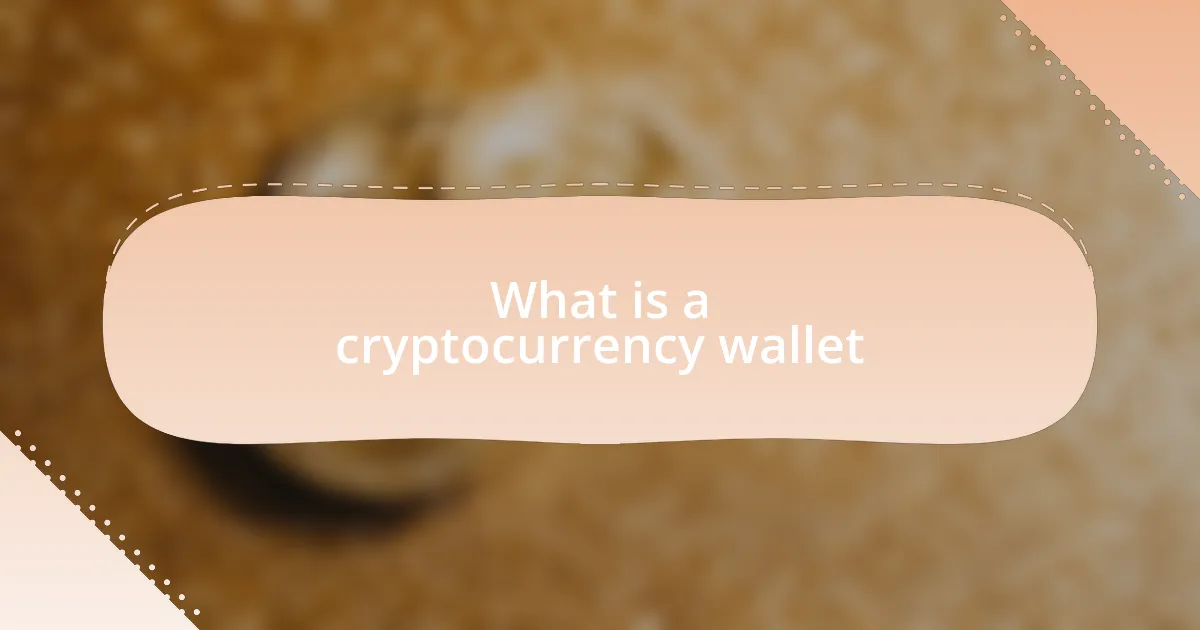
What is a cryptocurrency wallet
A cryptocurrency wallet is essentially a digital tool that allows you to store, send, and receive cryptocurrencies like Bitcoin or Ethereum. When I first dipped my toes into this world, I was a bit overwhelmed by the idea of keeping my assets secure. It felt a bit like I was carrying around piles of cash in a haunted house, uncertain of where to hide them safely.
These wallets come in various forms—software, hardware, and even paper wallets. Each type serves a different purpose, catering to different needs; for instance, I’ve found hardware wallets to be a great option for long-term storage. They provide that extra layer of security, similar to a bank vault, making me feel much more at ease with my investments.
What I’ve learned is that choosing the right wallet goes beyond just convenience; it’s about knowing what you want to do with your cryptocurrencies. Are you planning to trade frequently or hold for the long haul? Ask yourself that question. Ultimately, understanding the function of your wallet can shape your entire crypto experience and provide you peace of mind as you navigate this intriguing space.
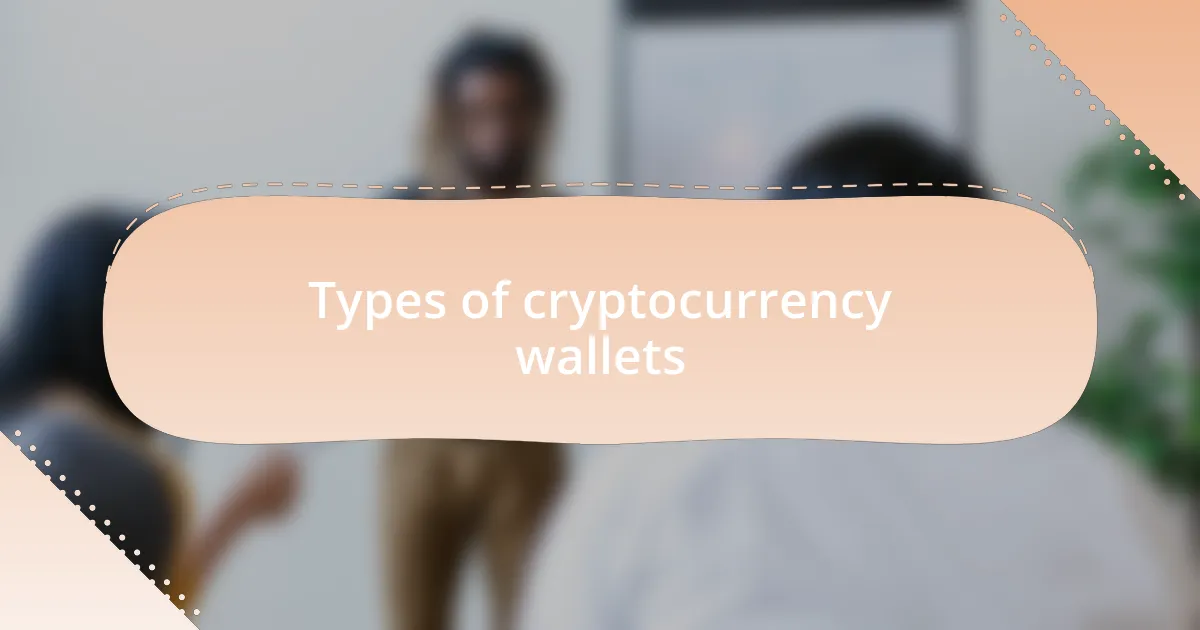
Types of cryptocurrency wallets
There are primarily three types of cryptocurrency wallets, each with unique benefits and drawbacks. Software wallets, which are applications you can download on your computer or smartphone, offer convenience and quick access. I remember my first experience using a software wallet; it felt like having my money at my fingertips, but I also worried about potential hacks. It’s that balance between ease of use and security that can be tricky.
On the other hand, hardware wallets are physical devices that store your cryptocurrencies offline. They’re akin to safety deposit boxes; I invest in a hardware wallet for my long-term holdings and find it incredibly reassuring. Not only do these wallets mitigate the risk of online threats, but they also allow me to feel more secure knowing my assets are safeguarded away from prying eyes.
Finally, there’s the option of paper wallets, which involve generating a printed QR code that contains your private keys. While I’ve personally never gone this route—mainly because of the fear of losing the paper—it’s a fascinating option for those who prefer to keep things entirely offline. Leaving that question lingering: how comfortable are you with managing physical assets? It’s essential to reflect on what level of risk you’re willing to take when choosing the wallet type that suits you best.
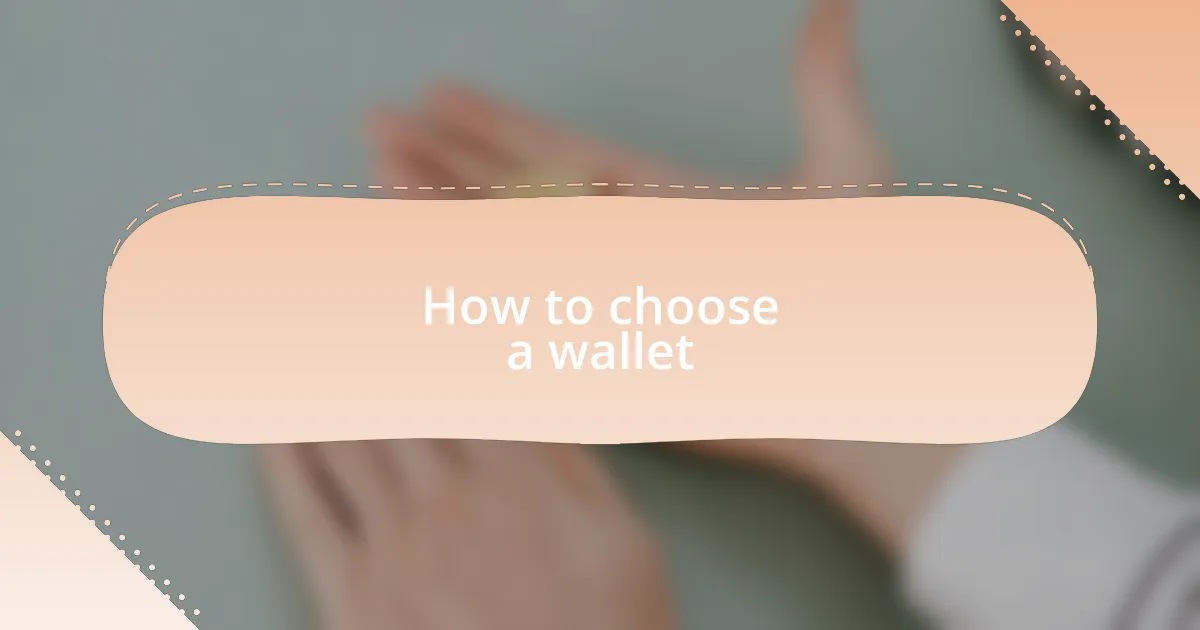
How to choose a wallet
Choosing the right cryptocurrency wallet can feel overwhelming, but it doesn’t have to be. When deciding, I often ask myself what I value most: convenience or security? For example, when I first began investing, I leaned towards a software wallet because it was so user-friendly. However, I quickly learned that ease comes with its risks, especially when I read about security breaches.
Another factor to consider is how much cryptocurrency you plan to store. I remember a time when I opted for a simple, free wallet for small transactions, only to realize that I was leaving my assets vulnerable. As my holdings grew, it became clear that I needed something more robust, prompting me to invest in a hardware wallet for extra peace of mind. Have you thought about how much you’re willing to invest in security?
Finally, it’s important to look into the wallet provider’s reputation and support. I once chose a wallet with mixed reviews, and it turned out to be a frustrating experience when I needed help. Nowadays, I research user experiences and community feedback thoroughly before making a decision. Trust me, you want to avoid the headache of navigating a poorly supported wallet. What steps are you taking to ensure you choose wisely?
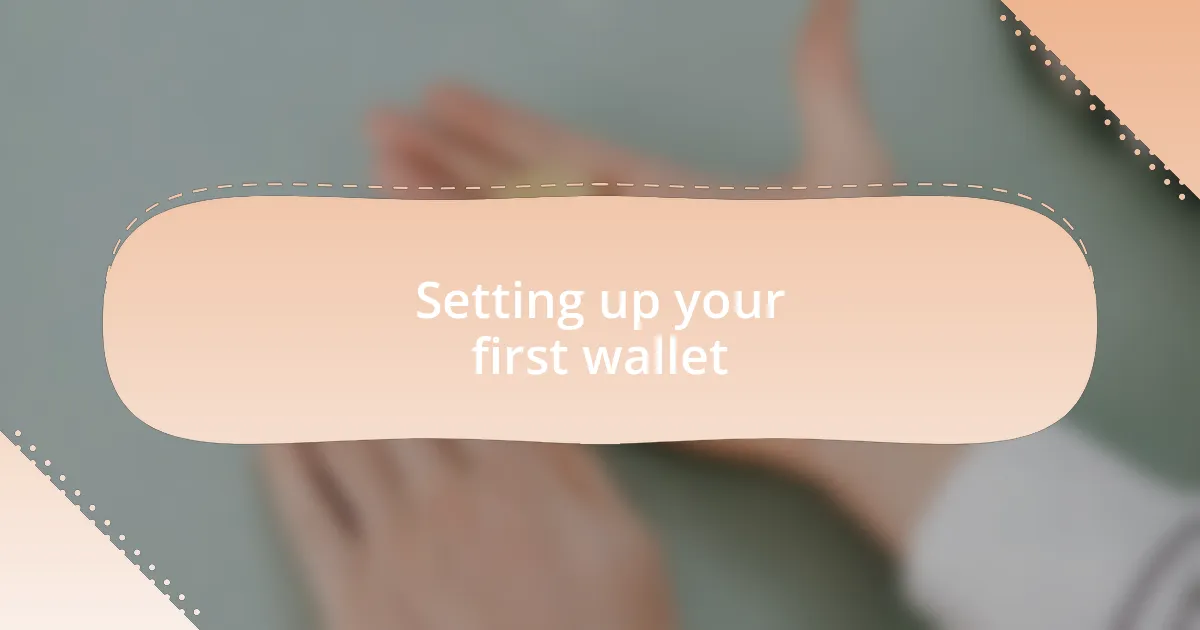
Setting up your first wallet
The first step in setting up your wallet is to download the software from a trusted source or purchase your hardware wallet. I vividly remember my first download; I was both excited and nervous, constantly wondering if I was taking the right precautions. It felt like stepping into new territory. So, always verify the website or seller, as phishing attempts can be deceptive and daunting.
Once installed or set up, you’ll need to create an account, which often involves generating a recovery phrase. I still recall the thoughtful way I recorded mine, ensuring it was safely stored offline. This phrase is essentially your lifeline to your cryptocurrency, and losing it can result in permanent loss. Have you given thought to how you’ll safeguard that phrase? It’s not just a series of words; it’s your security blanket in this digital space.
After configuring your wallet, it’s wise to make a small test transaction before transferring larger amounts. In my early days, I didn’t do this and hurriedly sent more than I planned, which sent my heart racing as I tracked the transaction. A small test can provide peace of mind and confirm that everything works as it should. Have you considered the importance of starting small? It can save you from unnecessary stress and give you a chance to familiarize yourself with the process.
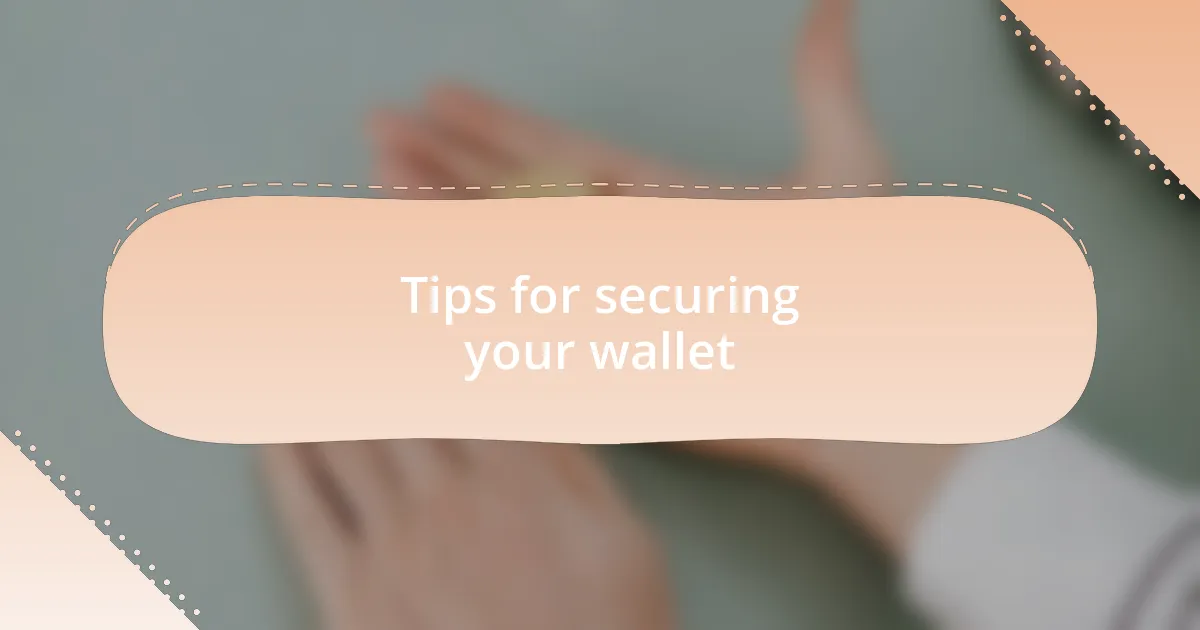
Tips for securing your wallet
When it comes to securing your wallet, enabling two-factor authentication (2FA) is an essential step. I remember the peace of mind I felt when I activated it on my wallet—it added an extra layer of protection. Without 2FA, access to your wallet is far too easy for someone with ill intentions. Have you set it up yet? If not, I strongly recommend you do it right away.
Another crucial tip is to keep your software updated. There was a time when I neglected to update my wallet app, thinking it was just a minor inconvenience. Suddenly, I learned about a major vulnerability that was patched with the latest update, and it hit me: these updates aren’t just for new features; they are for my security. How often do you check for updates? It’s a simple task that can make a significant difference.
Finally, consider storing a backup of your wallet in a secure, offline location. I once made the mistake of relying solely on my digital records, which led to a harrowing experience when my device crashed unexpectedly. Having a physical backup saved me from catastrophic loss. Have you thought about where your backup lives? Trust me, peace of mind is worth a little extra effort.
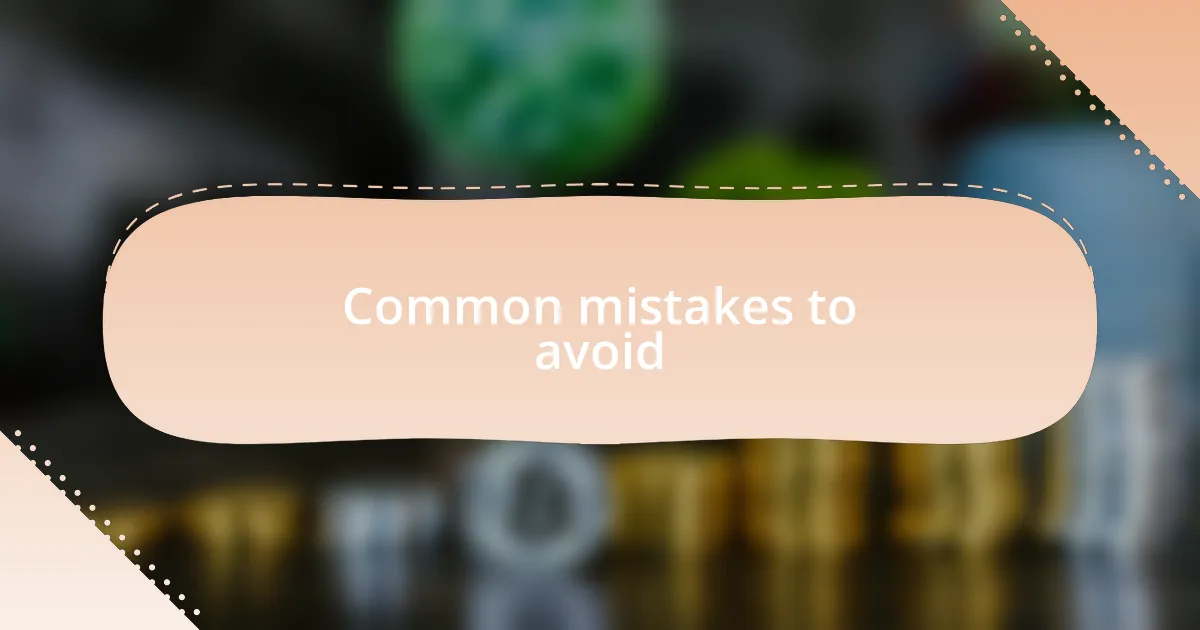
Common mistakes to avoid
One of the most common mistakes I see novice wallet users make is ignoring the importance of unique, strong passwords. Early on, I was tempted to use simple passwords because I thought it would be easier to remember. However, I ended up learning the hard way when a security breach occurred and I lost access to my funds. Have you considered how secure your password really is? Investing just a bit of time into creating a complex password can save you from potential heartbreak later.
Another frequent pitfall is falling for phishing scams. I recall receiving an email that looked legitimate, urging me to verify my wallet details. It felt convincing, but thankfully, my instinct kicked in, and I did some research before clicking any links. This experience taught me to always double-check the source. Are you aware of the signs of phishing? Staying vigilant about potential scams is crucial to protecting your assets.
Lastly, some users neglect to familiarize themselves with their chosen wallet’s features. I remember feeling lost when I first started—the options seemed overwhelming. It wasn’t until I dove into the user guide that I discovered how useful certain features could be for managing my crypto. Have you taken the time to explore your wallet’s capabilities? Understanding your wallet can empower you to use it effectively and securely.
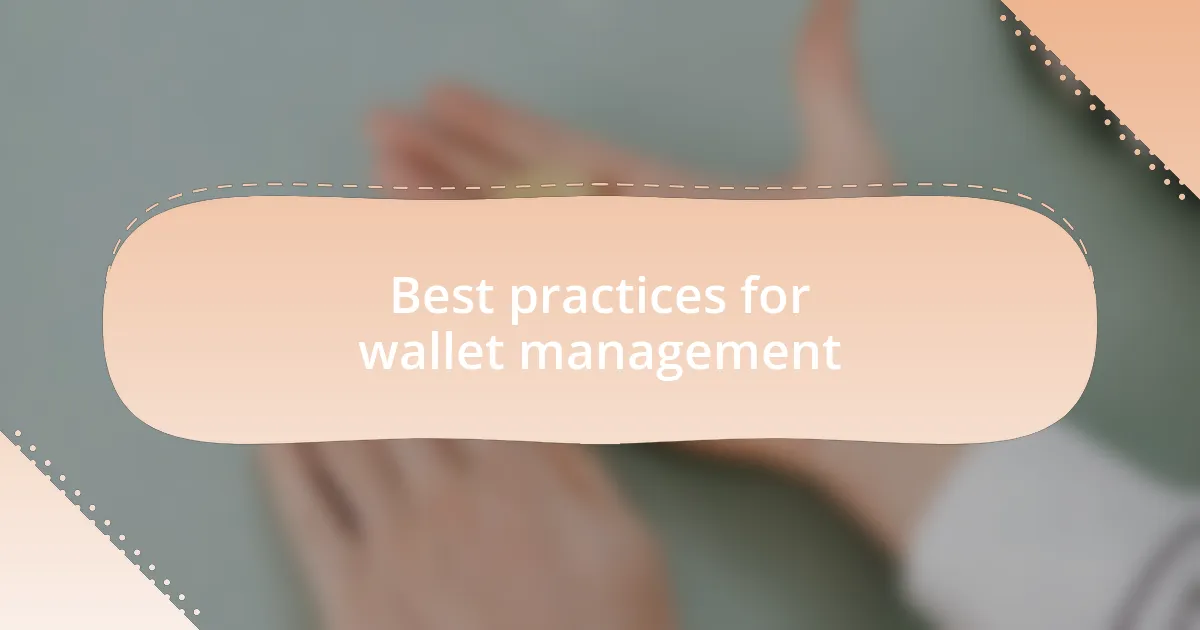
Best practices for wallet management
To effectively manage your wallet, regular backups are essential. I remember a time when I lost access to my wallet because of a sudden device failure. Fortunately, I had made backups, which allowed me to restore my funds quickly. Have you considered how often you back up your wallet data? It’s a small but vital step that can save you a lot of stress later.
Another best practice is to keep your software updated. I learned this the hard way when an outdated app put my funds at risk due to security vulnerabilities. Taking the time to ensure that your wallet’s software is current can significantly enhance your protection. Are you proactive about software updates? It’s a simple habit that can make a world of difference in your wallet security.
Lastly, never share your seed phrase or private keys with anyone. This is something I can’t emphasize enough. When I first started, I was curious and asked a more experienced friend about the seed phrase’s significance. They quickly cautioned me about the risks. Have you considered how much trust you place in others when sharing sensitive information? Maintaining strict control over your keys is crucial for safeguarding your assets.